Technologies & the Best Tech Stack for Fintech Software

Fintech, or financial technology, has become an appealing alternative to traditional banking. It has transformed the financial services industry and changed the way we manage money. Therefore, many companies who understand the powerful impact of the technology are incorporating fintech into their existing processes. Others are developing fintech startups from scratch.
Django Stars has been involved in fintech project development since 2008. For instance, our team has worked with technology stacks of advanced platforms for Molo Finance, the UK’s first digital mortgage lender, and Money Park, Switzerland’s largest mortgage online broker. This extensive experience equips us to competently strategize on and advise on selecting the right technical solutions in the fintech industry.
However, like many other endeavors, new businesses require planning and elaborate preparation – especially ones related to an emerging industry like fintech. So, when deciding on the core features and tech stack for your startup, it’s crucial to examine the main market requirements and fintech trends, and – most importantly – the most frequently used and reliable technologies and software.
Listen to “Top Technologies for Fintech Software Development” on Spreaker.
In this article, we provide an overview of the key technologies used in fintech software development and their applications. Whether you’re a fintech entrepreneur or a software developer, this article will offer valuable insights into the tools and technologies driving innovation in the financial industry.
Top 7 Technologies Used in FinTech
Today, the fintech industry is full of innovative solutions and services. Robotics, cloud technologies, shared ledgers, and other solutions are seen more frequently in projects that are setting new trends and strengthening competition in the financial market. Let’s look at those trends. And if suddenly you were looking for information on how to develop a banking application, we talked about this in our other article.
The Internet of Things and Secure Payment
With so many smart, interconnected devices appearing every day, IoT technologies will see comprehensive development in coming years.
Specialists will continue to refine contactless payment methods. Although people can already pay for purchases with their smartphones, in the near future, contactless payment will also become possible on many other devices.
Personalization
Personalization is another global trend that will determine the further evolution of the financial industry. It forces fintech companies to offer personalized services and create websites, email messages, popular fintech apps, notifications, payment confirmations, invoices, chatbots, and messages on social media websites that are all focused on the client. Personalization comes first in many areas, especially retail banking.
Digital Banking
The erosion of customer trust in old-fashioned traditional banking has created a space for alternative digital options – also known as challenger banks or non-banks – in the financial industry. These players are known for their use of technology, but also for offering higher interest rates, lower fees, and superior customer support.
Two of the most popular digital bank ventures include the Fidor and Zelf. Both are virtual-only banks that enable the user to avoid red tape. With fintech applications, there’s no need to waste time visiting a bricks-and-mortar banks — now, it’s possible to complete all financial transactions on the go.
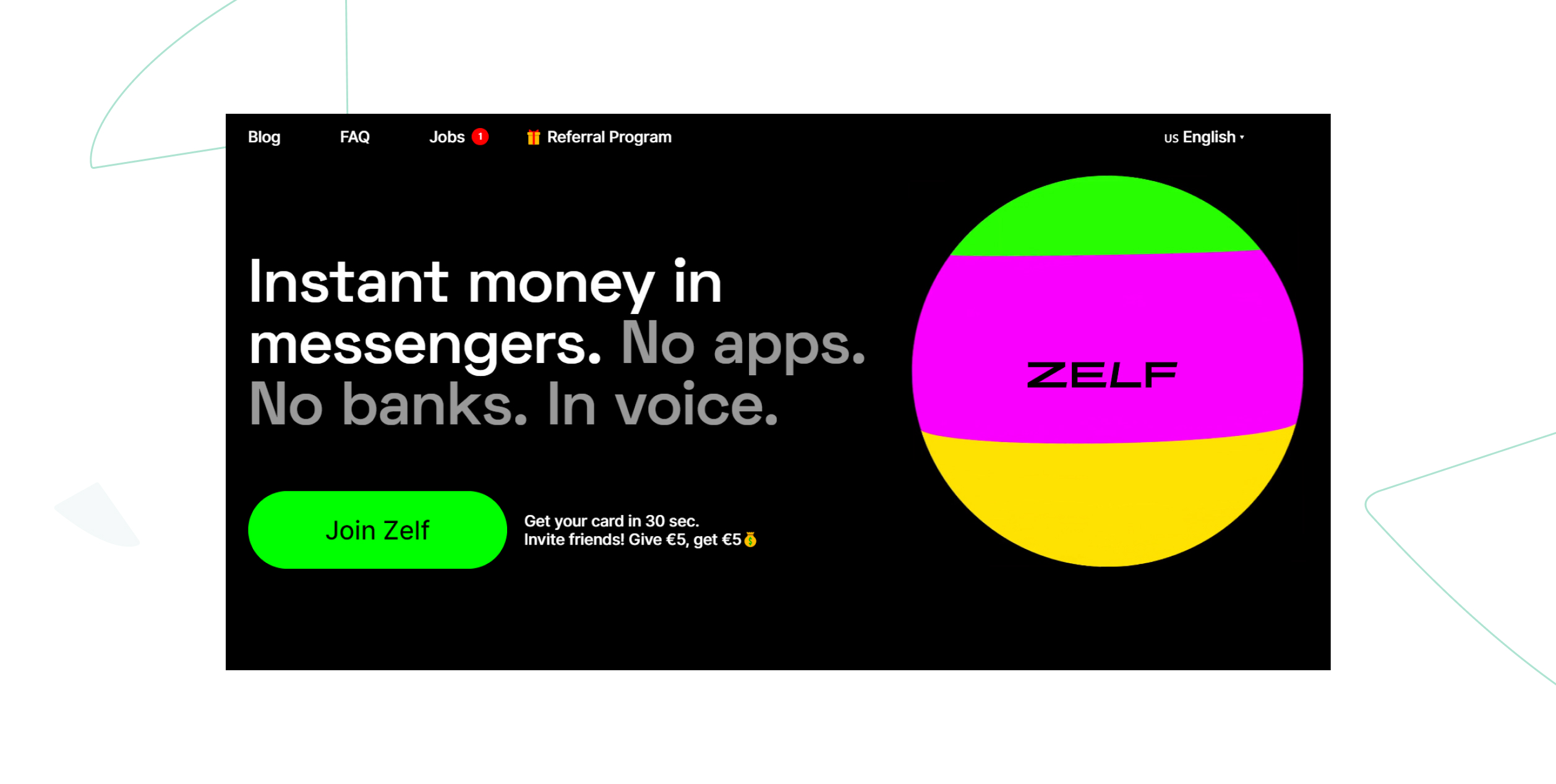
Regardless of the undisguised skepticism of players in the traditional financial sector, challenger banks keep on growing and affecting different segments of the financial market. The rising interest in digital solutions is highlighted in a Facebook white paper that reveals that 92% of millennials in the US express distrust in traditional financial institutions. Further, 45% of them are ready to switch to fintech solutions.
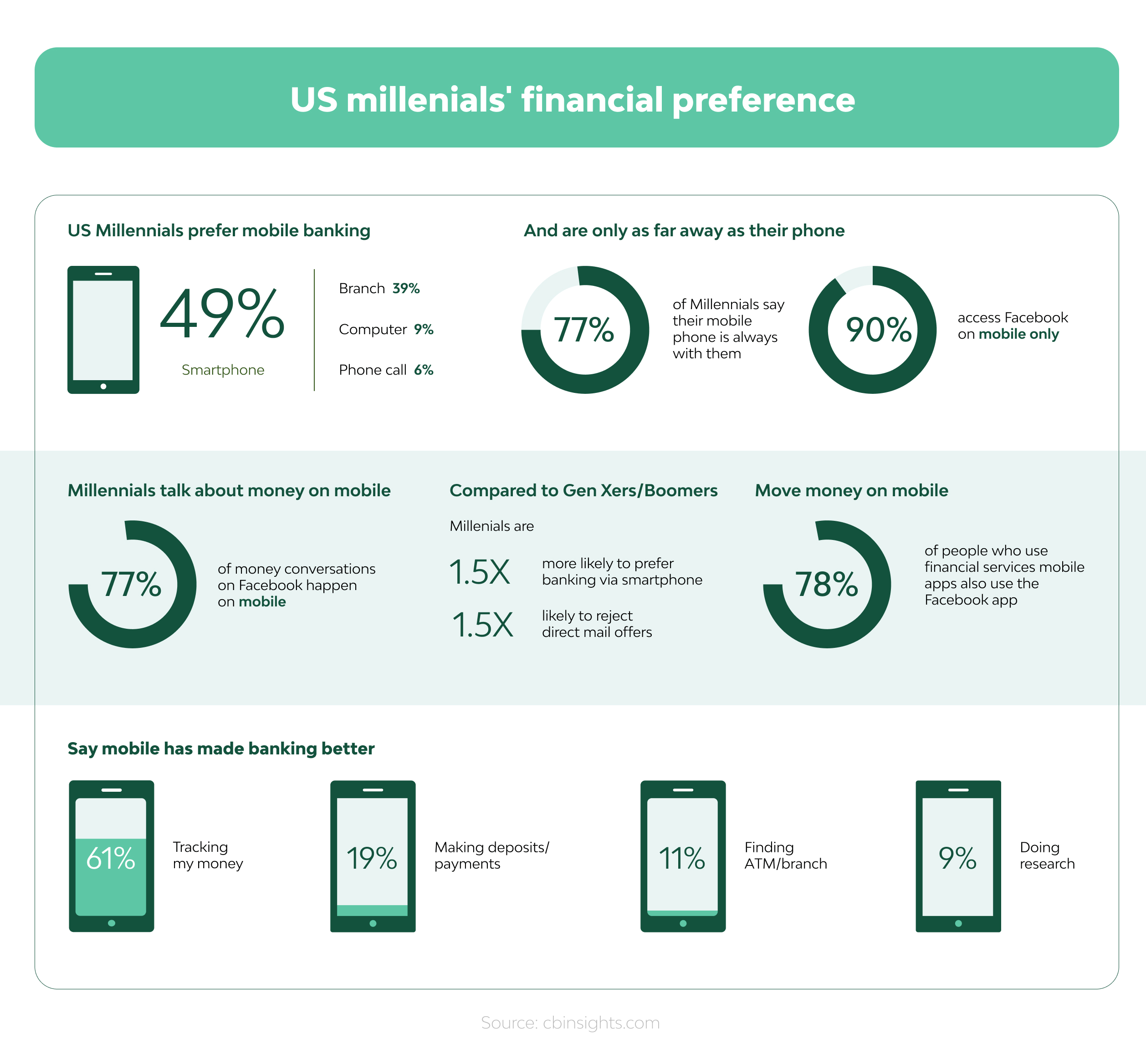
The rapid development of fintech may leave the impression that it’s driving banks out of business. However, if they can’t get a finance license, startups are most likely to collaborate with banks by providing them with innovative solutions in return for access to the bank’s client base.
AI and Robotics
The global spread of financial technologies has led to drastic changes and forced banks to align their operations with those changes. That’s where digitalization comes into play. It’s leading robotic machines to replace bank employees to gain efficiency and higher profits. Chatbots are replacing call centers and customer care specialists, as communication can be handled by robots just as plausibly as with humans.
The role of artificial intelligence in fintech is highlighted in the Mizuho Financial Group case. Mizuho, a Japanese megabank, will cut about 19 thousand jobs by 2026 and replace them with computers to keep up with changing industry trends.
Read More: How to Integrate Payment Gateway for Startups
Cloud computing
Cloud computing is also revolutionizing the way financial services are delivered and managed. By leveraging cloud-based infrastructure, fintech companies can scale their operations, store and process large volumes of data, and access powerful computing resources without the need for extensive on-premises infrastructure. This facilitates real-time data analysis, security enhancements, and seamless integration with other systems and services.
While improving agility, flexibility, scalability, and cost-efficiency, cloud-based solutions allow fintech companies to innovate rapidly, launch new products and services, and adapt to changing market dynamics.
Additionally, they offer improved accessibility, enabling customers to access financial services anytime, anywhere, through various devices.
Blockchain
Blockchain is another powerful technology that contributes to the transformation of the fintech industry by providing enhanced security, transparency, and efficiency in financial transactions. It enables decentralized and immutable ledger systems, eliminating the need for intermediaries and reducing costs.
Blockchain is widely used for various fintech applications, including digital currencies, smart contracts, identity verification, and supply chain management. Its decentralized nature ensures trust and immutability, making it ideal for secure and efficient financial operations. By leveraging blockchain, fintech companies can streamline processes, enhance data integrity, and provide innovative financial solutions to customers.
RegTech
RegTech, or Regulatory Technology, has emerged as a crucial component in banking and finances, streamlining compliance processes and addressing regulatory challenges. With the application of advanced tools such as AI, machine learning, and big data analytics, RegTech solutions automate regulatory compliance, improve risk management, and enhance overall operational efficiency. These solutions enable financial institutions to navigate complex regulatory landscapes, ensure adherence to compliance requirements, and mitigate potential risks. Refer to our article on RegTech in FinTech for more details.
By leveraging RegTech, the fintech industry can achieve greater transparency, cost savings, and regulatory compliance, ultimately leading to a more secure and trustworthy financial ecosystem.
Fintech Market Requirements
The main challenge when selecting the optimal technology for a fintech app is the requirement that it performs as efficiently as possible. Six directions that are critical for a fintech software development company include the technology’s uniqueness, safety, credibility, agility, data handling, and flexibility.
Uniqueness
New fintech ventures are launched almost every day. That makes the competition fierce and obligates you to enter the market with a unique and outstanding product. Before successfully bringing your startup to life, make sure you determine a specific niche for your project and all the advantages your fintech solution provides.
Safety
Because all fintech apps deal with money and financial data, they must ensure secure access and protect data from theft. So, to maintain your clients’ trust in your brand, prevent even small failures in the safety system by using the most sophisticated technologies.
Credibility
People who switch to fintech solutions expect that they will not experience any downtime when obtaining financial services. The task for a financial technology provider is to ensure instant and unimpeded access to the users’ money.
Agility
When entering the market with their projects, fintech companies face cutthroat competition with industry leaders who have been occupying the niche for years. To stand out, the technology you use must be agile enough to let you react to changing market trends promptly and apply changes to your product. Being flexible is vital.
Read More: Fintech Product Design
Data Handling
Insights about clients – including their purchasing behavior, credit ratings, and income – help financial companies build their business and provide an excellent user experience. However, to manage and analyze customer information properly, fintech startups must stick to technology used in data science. This emphasis on leveraging cutting-edge data science tools and techniques underscores the critical role of fintech product development in staying competitive and meeting the evolving demands of the market.
Flexibility
Every single company, no matter what niche it’s in, is a part of a business ecosystem. That means your startup project should be flexible enough to quickly integrate with other systems and popular fintech apps.

Tech Stack for Fintech Software Development
The technology hiring platform HackerRank specified the six most effective coding languages in the fintech sector. The list included Python, Java, C++, C#, C, and Ruby. Before selecting the right financial technology stack for back-end development, consider their pros and cons along with successful use cases to make an informed decision. The choice of coding language for a fintech app should always depend on the project’s technical and business requirements.
From our experience, the mix of Python language and Django framework appears to make it a piece of cake. Here’s why.
Python
Unlike the finance industry, where Java and C++ lead the way, fintech is the business sector where Python is the preferred development language. In fact, it offers 50% more opportunities than good old Java.

It is one of the most dynamically developing programming languages to have an impact on the financial field. That’s why, fintech players are more likely to choose technology over classic traders. For instance, Bank of America embarked on the trail of digital transformation and used fintech strategies that led it to convert its fintech tech stack from unsupported IT components to Python.
Read More: Digital Transformation in Banking and Finance
What Makes Python the Best Programming Language for Fintech Development?
Python, being a perfect match for startups, brings great value to the fintech sector specifically. What are they?
- Python is extremely popular among developers, which guarantees there will be a continuously growing number of specialists and superior-quality financial apps.
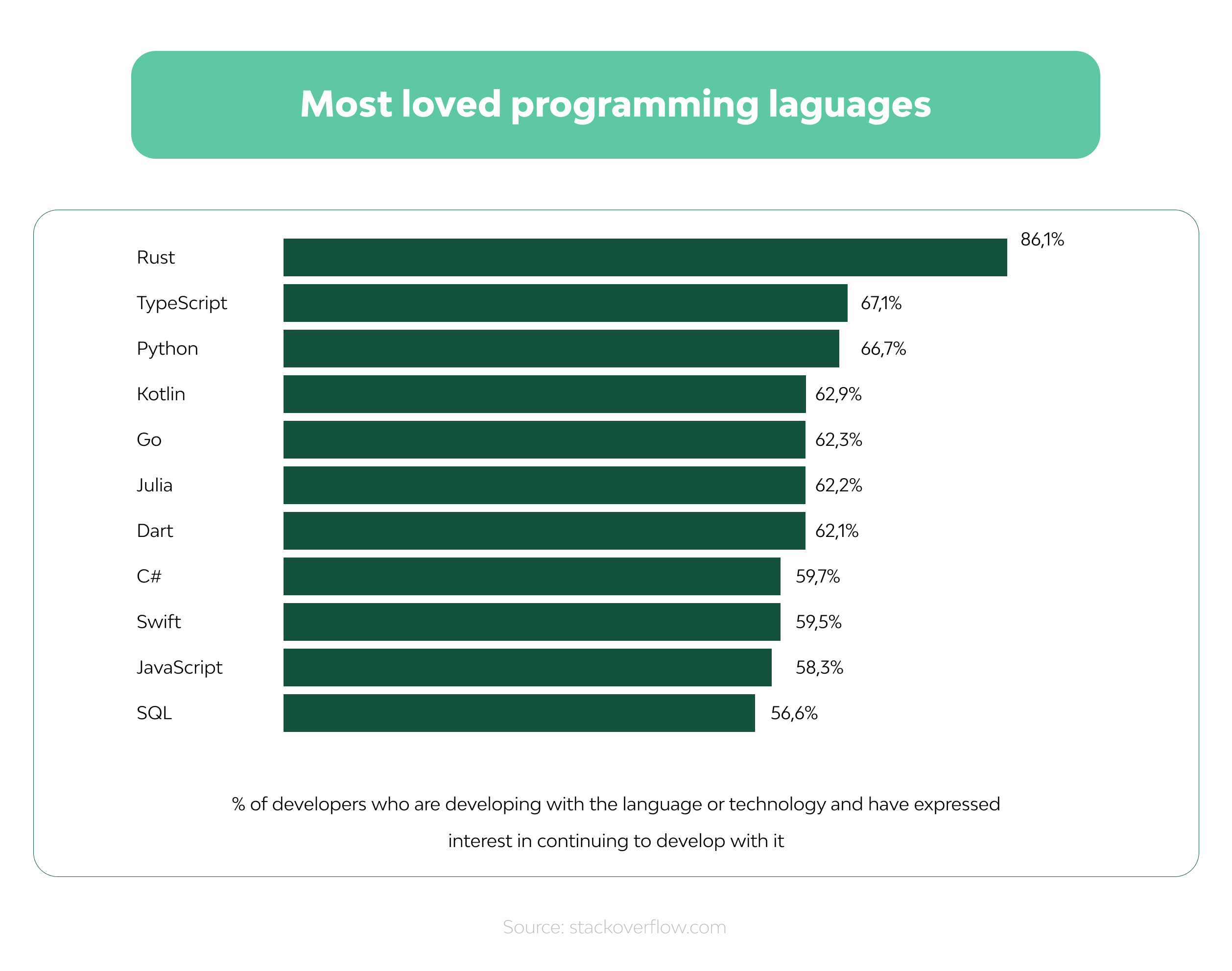
- Python code is transparent, which results in fewer bugs during development. This comes in especially handy when you’re building fintech applications and providing flawless service.
- The time to market is short due to the language’s simplicity and transparency. Writing code in Python doesn’t take much time, while a mix of Python and Django technology ensures the quick and safe release of completed components and MVPs that meet users’ expectations.
- The technology offers a wide collection of open-source libraries. The latter prevents fintech Python developers from having to create separate components from scratch. The most popular libraries – SciPy, NumPy, pandas, ffn, finmarketpy, pyalgotrade, zipline, and scikit-learn – give you a clear idea of the possibilities Python offers.
Python and Django Combined
Now that we’ve discussed why Python is the dominant programming language for financial technology, let’s take a closer look at how it works in combination with the Django framework and why this mix may work for you as a pure financial technology player.
Above all, Django is a Python-based open-source web framework developed to simplify web design by enabling less code to be used, low coupling, and reusability of components. Choosing Django technology for your application development offers significant benefits and makes the development process hassle-free. Here’s how:
- It enables you to build a minimum viable product quickly to draw the attention of early adopters and adapt to ever-changing financial rules.
- Django is a sustainable framework. During 13 years of use, no global company has experienced an unexpected crash. You can rely on this framework.
- Django technology comes equipped with a ton of built-in features, so developers don’t have to surf the Internet for necessary tools every time they build a new app. That saves time you can spend on more essential business processes.
- The framework ensures easy integration with REST APIs, including banking platforms.
Read More: Third-party API Layers in Fintech
Python-Based Fintech Projects
We’ve established that Python is a great solution for fintech endeavors. But while theory is all well and good, what about real-life performance? Which top companies use Python for fintech technology stack? Let’s consider a few in detail:
Molo

Molo is the UK’s first fully digital mortgage lender. The company’s main challenge is to completely transform the mortgage acquisition process to reduce unnecessary complexity and help consumers save a lot of time. Molo’s direct-to-consumer services allow instant online mortgage loan approvals instead of traditional paperwork and bureaucracy.
Tech Stack: The Molo web platform’s main technologies are Python, Django, and Django REST framework alongside Nginx, Redis, React, and others.
Moneypark
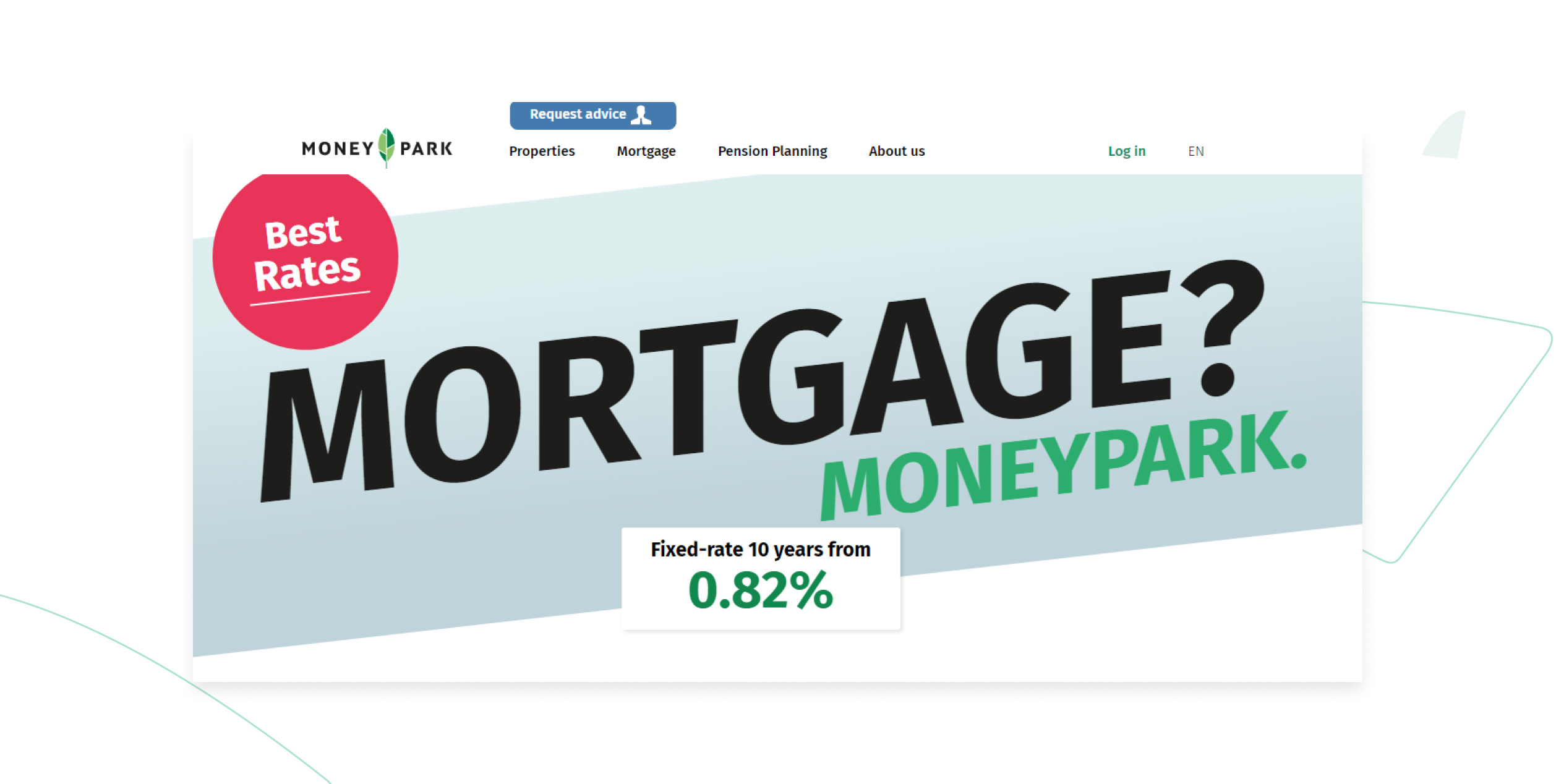
Moneypark is Switzerland’s most technologically advanced mortgage and insurance products advisory service. The agency serves as a middleman between customers and banks and offers high-quality consulting to help residents find mortgages and insurance with the best rates. Getting the best mortgage for you doesn’t take long — all you have to do is contact the specialists at Moneypark, determine the optimal financial solution, and sign a contract.
Tech Stack: Moneypark has been built using a combination of Python and Django, Redis, Django REST framework, HTML5, CSS3, etc.
Molo and Moneypark are two of several fintech projects our engineers have had a hand in. You can read about some of our other projects here.
Thought Machine
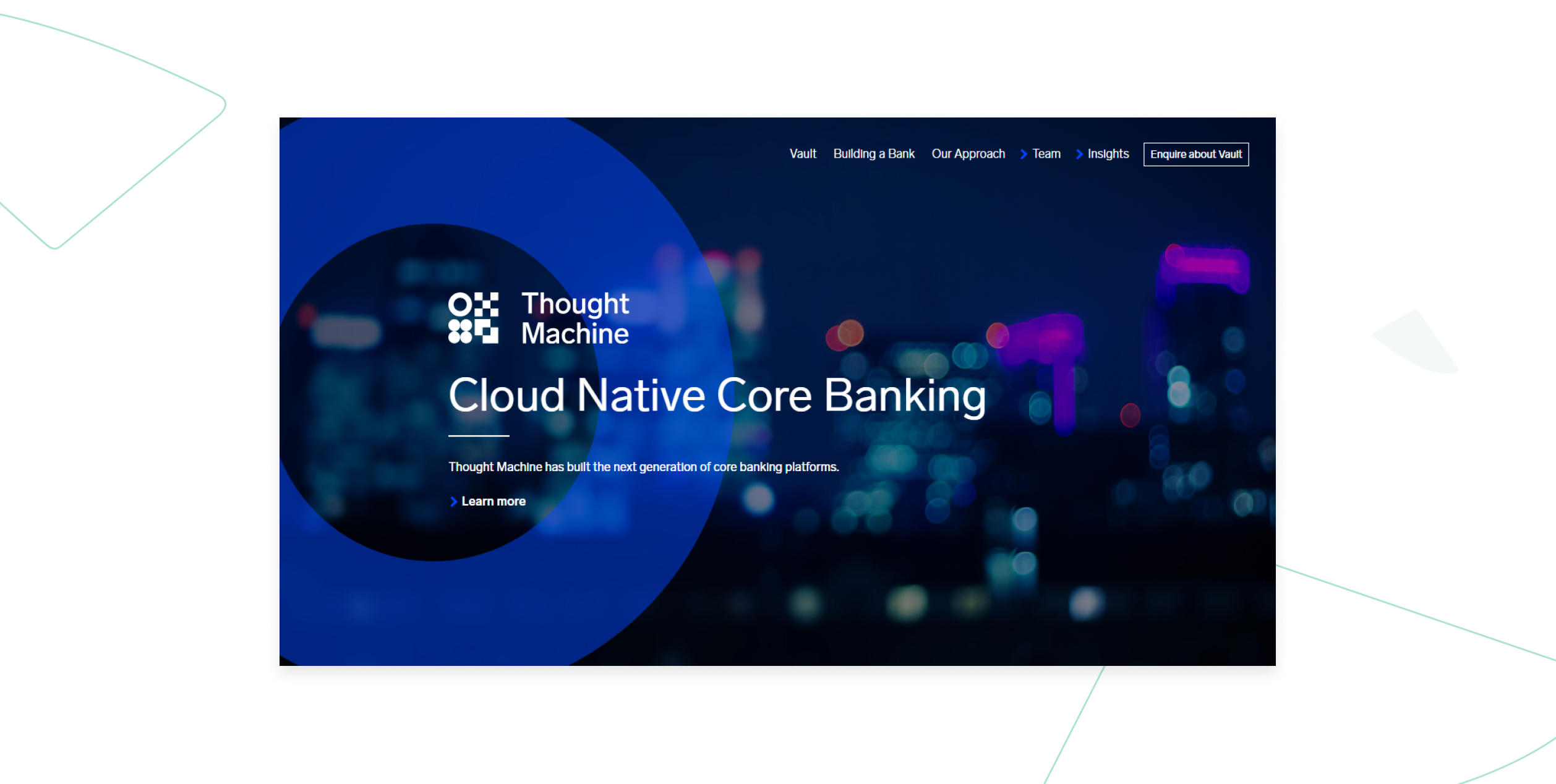
Thought Machine was founded in 2014 to wean the banking industry off of legacy IT platforms. Today, it’s a top fintech project known for cloud-native technology designed to radically change the core banking systems. For this purpose, the company created Vault, a retail banking platform that ensures hassle-free configuration to meet the needs of any bank.
Tech Stack: The largest tech marketplace, G2, detects the Python included in Thought Machine’s tech stack. They are fans of JS and use a mix of Python and Java for their servers and Cassandra database.
Robinhood
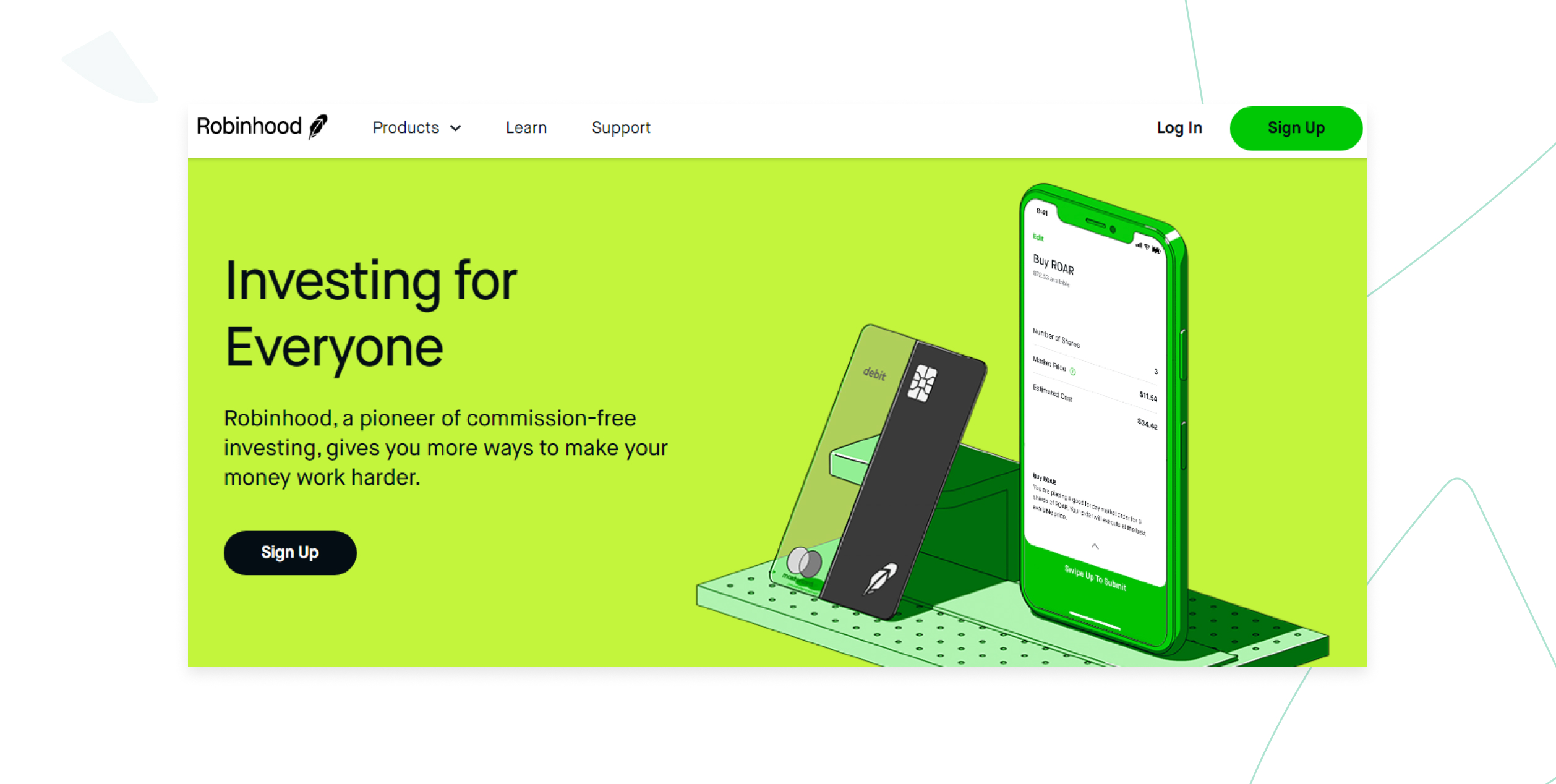
Using the Robinhood mobile app, both regular folks and affluent people can trade stocks with no brokerage fee. Back in 2018, the app was updated with cryptocurrency features, which meant users in five US states could buy and sell Bitcoin and Ethereum.
Tech Stack: While Python is presented in a tech stack for fintech as a server-side language, the Django framework is used to build an app. In addition to a mix of Python and Django, Robinhood’s founders also chose to work with the Go language.
Wrap Up
Fintech is a rapidly evolving and highly promising sector in the financial industry, one with long-term perspectives and endless opportunities. This is why many financial companies seek to integrate technology into their operations or start their own fintech project. To do it right, it’s important to choose the most advanced tech stack possible for your startup.
Python has proven to be the best programming language for fintech due to its simple and transparent code, clean syntax, short time to market, and wide variety of open-source libraries.
If you require assistance or guidance on getting started, don’t hesitate to talk to our development team.
- What are the most popular programming languages in fintech software development?
- The list includes popular coding languages Python, Java, C++, C#, C, and Ruby. Unlike the finance industry, where Java and C++ lead the way, fintech is the business sector where Python is the preferred development language. From our experience, the mix of Python language and Django framework appears to make it a piece of cake. However, before selecting the right financial technology stack for back-end development, consider their pros and cons along with successful use cases to make an informed decision.
- What are some of the most popular frameworks used in fintech software development?
- Spring, a Java-based framework, is favored for its comprehensive features, dependency injection, and support for enterprise-level applications. Django, a Python framework, provides a high-level development environment with built-in security features and rapid application development capabilities. .NET, a framework developed by Microsoft, is widely used for building scalable and secure fintech solutions. React, a JavaScript library, is popular for developing dynamic and interactive user interfaces in fintech web apps.
- What are some of the most commonly used databases for fintech software?
- Fintech software requires robust and efficient databases to store, manage, and retrieve financial data. MySQL, an open-source relational database, is widely used in fintech for its reliability, scalability, and extensive community support. PostgreSQL, another popular open-source relational database, is valued for its advanced features, data integrity, and strong support for complex queries. MongoDB, a NoSQL database, is often chosen for its flexibility, scalability, and ability to handle large volumes of unstructured financial data. Oracle, a commercial relational database, offers a comprehensive suite of tools and features suitable for complex fintech apps.
- How do I build the optimal tech stack for fintech software development?
- Ensuring the most suitable tech stack for fintech software development requires careful consideration of various factors like scalability, security, and integration capabilities. It's recommended to consult with experienced professionals who can assess the specific project and provide tailored recommendations. They can help select the combination of programming languages, frameworks, and databases optimized for your software development needs. Feel free to contact Django Stars for personalized guidance and support.











